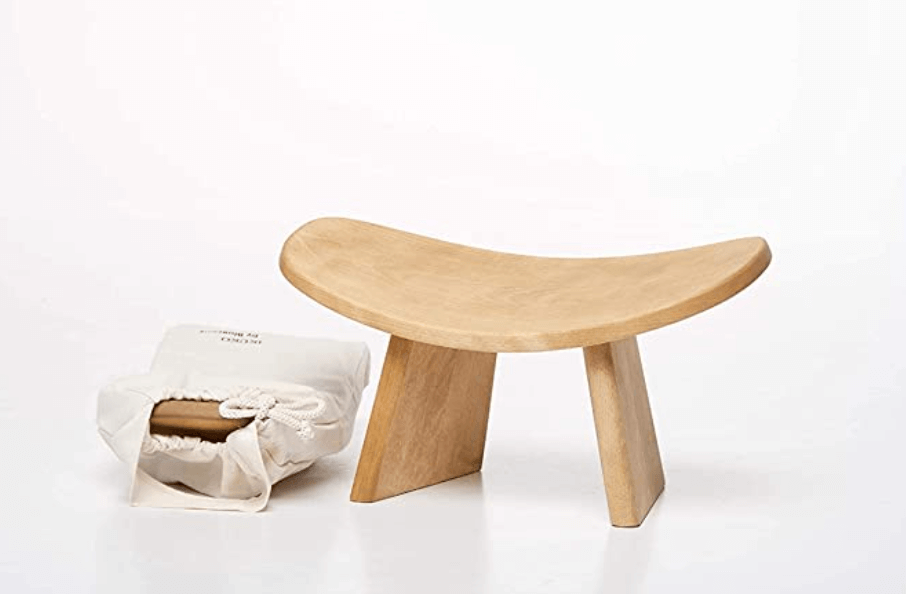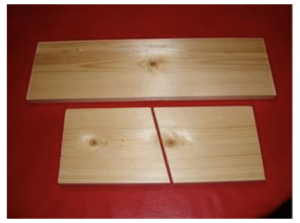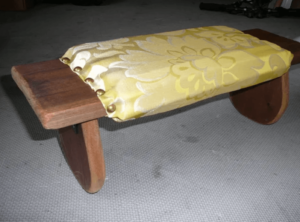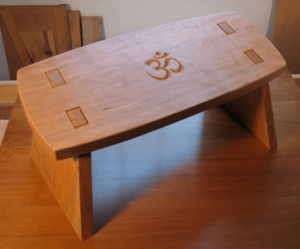
Meditation is calming. Centering. It’s a perfect way to detach from worldly concerns and distractions, even if only for a moment.
Until, suddenly, it isn’t.
You find that holding a kneeling position for a long time hurts your knees, your back, your neck, and even your ankles. You don’t want to give up on meditation, but at the same time, you’re starting to dread it. What’s an aspiring yogi to do?
The simplest fix is to get yourself a meditation bench.
Before you understand why you need a meditation bench, you might want to know what a meditation bench is.
A meditation bench is a small, angled bench that will support you and help maintain proper form in a kneeling position. It’s typically made of wood and sometimes cushioned.
The exact height and angle vary, but it will typically be under a foot tall.
There are several benefits to using a meditation bench, the main ones being what we’ve outlined above:
If you prefer to meditate in a kneeling position, but health concerns, especially joint and back pain prevent you from doing so, a meditation bench can be an excellent solution. If you have severe back or joint pain and aren’t able to meditate in a kneeling position at all, a meditation bench may alleviate some symptoms, but won’t negate them entirely.
Even if you don’t have joint or back pain, a meditation bench can help with form and make longer meditation sessions more feasible.
Because of the height of a meditation bench using one is a little more complicated than sitting on a chair, but only slightly.
A meditation bench is meant to specifically complement your natural kneeling position, so unless you have a specific reason for needing a taller or shorter bench, the suggested heights break down as follows:
If you’re used to meditating in a kneeling position, you probably already have a mat, rug, or cushion. A meditation bench will complement whatever you’re already using nicely. Although if you’re using a mat or cushion with a lot of give, you may want to adjust the height of your bench slightly.
If you’re new to meditation and starting out with a meditation stool, first of all, excellent choice. Secondly, your meditation bench will only be complemented by some sort of surface padding to kneel on.
Because the bench will be transferring most of the pressure points away from your knees and ankles you don’t need a ton of padding. Choose something smooth and soft that won’t be damaged by the bench.
Kneel with your legs slightly parted. Your knees should be more or less in line with your shoulders. Your ankles should be flat against the ground, with toes pointed behind you. If you can’t manage this, a rolled towel can be used to support your ankles.
Lift yourself up slightly, and slide or place the bench over your calves, then sit back down onto it. Adjust as needed.
The main purpose of a meditation bench is to support your spine in its correct position with minimal effort and attention. Once you’ve found a comfortable perch on the bench, straighten your back and relax.
Usually wood is your best bet. You get the best tradeoff between weight and durability. Plus the craftsmanship can help create the right atmosphere and aesthetic.
Yes. They’re usually not as durable, but if you’re not sure about what you need, or really in a crunch over shared space they’ll work in a pinch. Some benches also have rounded legs that allow you to adjust the angle.
Compared to kneeling without support or aid, yes, definitely. It may take a little getting used to, but it’s ultimately the most comfortable way to maintain a correct posture for an extended time.
There’s no shortage of options for meditation benches, but at the same time, the wealth of options can be a bit overwhelming. To help you out, we’ve collected the five best choices. A local retailer or studio will also likely be able to help you if you have specific concerns or needs.
This meditation bench comes with three size options for different height options. It’s ergonomically constructed, and both the seat and legs will help guide you into the correct posture. The legs slot into place, allowing for easy storage and transport without sacrificing stability.
This is a simple, wonderfully functional bench. The rounded bottoms on the legs mean you can adjust the angle, and a cushioned top adds extra comfort. If you’re looking to try out a meditation bench, or just want a practical option that does exactly what it says on the box, you won’t go wrong here.
This one stretches the definition of “bench” just a little, but you’ll be hard-pressed to find a round-up of the best meditation benches that doesn’t feature it. The bench itself is simple, stylish, and ergonomic. The leg snaps into place with a magnetic locking mechanism, which again, offers easy transport and storage without sacrificing stability.
This lightweight folding bench uses tension to hold the adjustable legs in place. It features a cloth sling seat, which removes concerns about the specific angle but may require a little more attention to your specific posture. This bench feels casual and perfectly fitted to wherever you take it.
Rather than being made of wood, this bench features a strong molded plastic design. The legs slot into place and the cushion can be easily fastened and unfastened. It’s another wonderfully portable option and the ability to attach or detach the cushion gives you even more versatility.
If you’re the DIY type or otherwise want to take your spiritual life into your own hands (the point of meditation for many of our readers), there’s good news. Making your own meditation bench is incredibly simple, with countless opportunities for customization.
Let’s look at the basic plans for making a meditation bench, and then some alternate options below.
For a basic bench, you’ll need:

Build a meditation bench

Like we mentioned above, there are countless ways to put your own spin on your homemade meditation bench. Try out some of these, or let us know your own ideas.

This Gorgeous, Puzzle-Style Bench

This Sieza Bench, With Padding and Adjustable Angles

Handcrafted Fastener Free Meditation Bench
Or Try a Simple, Center-Leg Variation of The Basic Bench

Meditation Bench Single Leg